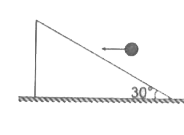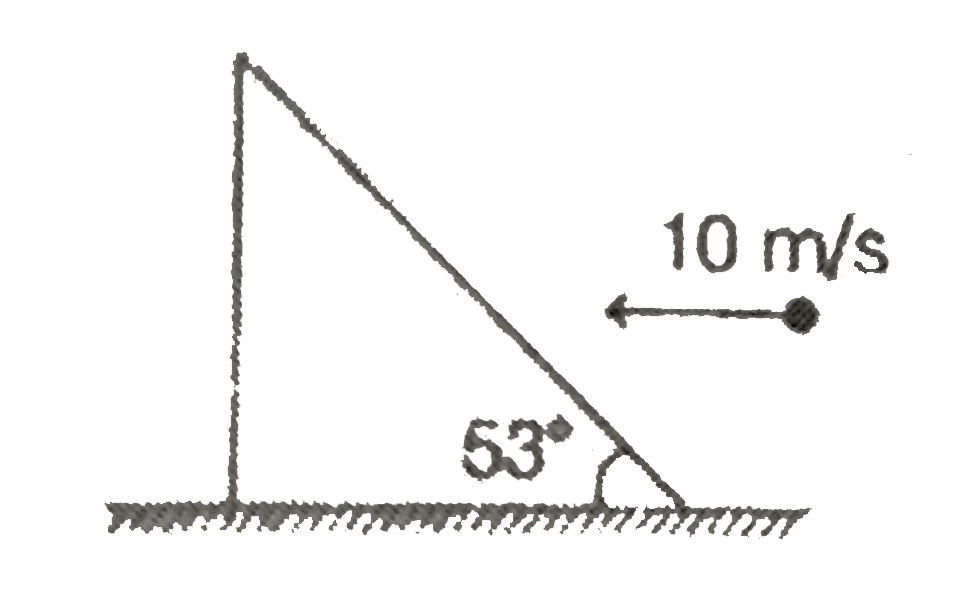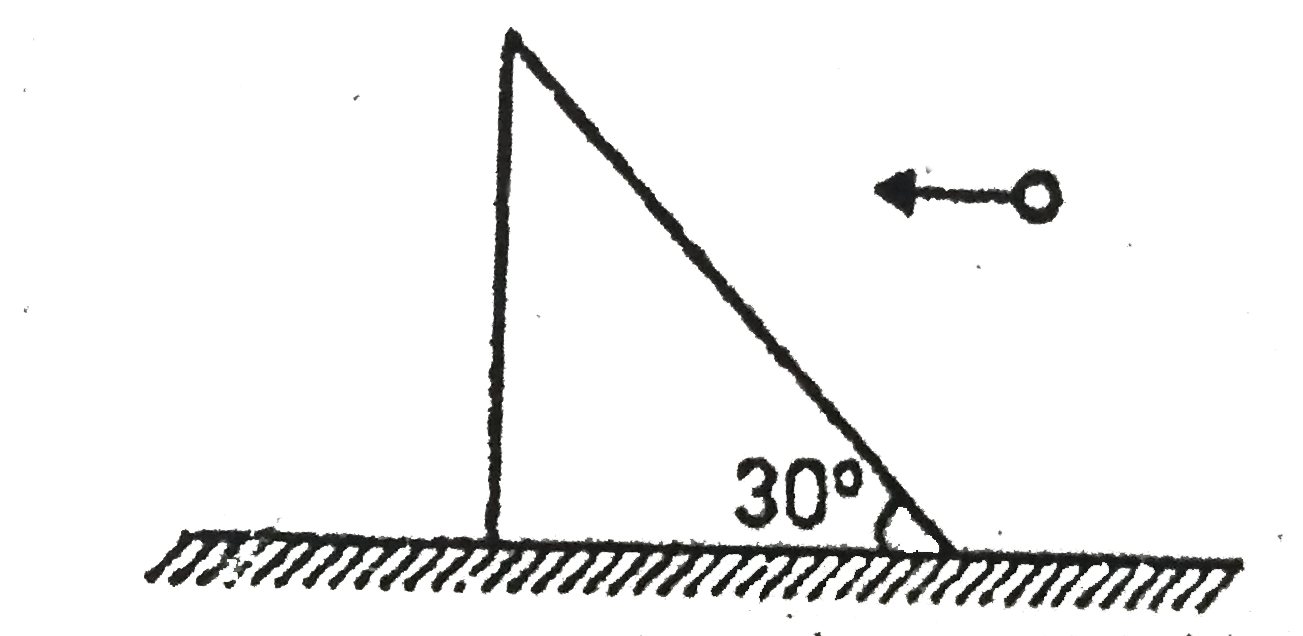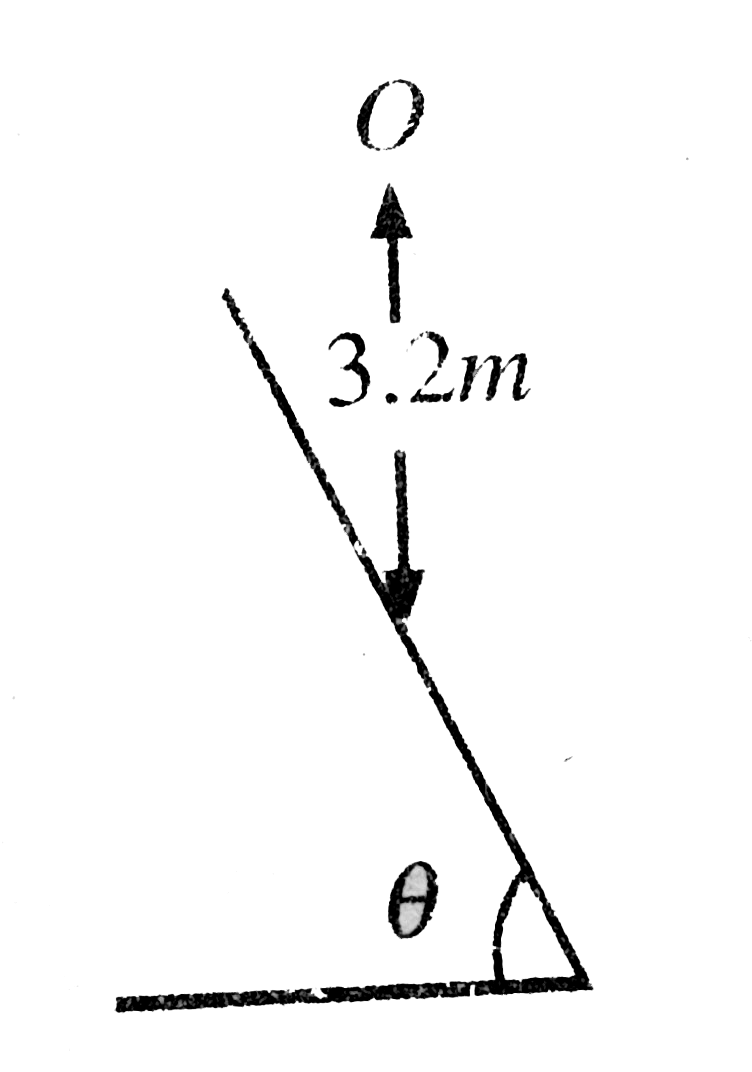A ball of mass 1kg strikes a wedge of mass 4kg horzontally with a velocity of 10m/s. Just after collision, velocity of wedge becomes 4m/s.Friction is absent everywhere and collision is elastic. Select the correct alternative.
speed of ball after collision is 12m/s
speed of ball after collision is 8m/s
impulse between ball and wedge during collision is 16N-s
impulse between ball and wedge during collision is 32N-s
The correct Answer is:D
Step by step video, text & image solution for A ball of mass 1kg strikes a wedge of mass 4kg horzontally with a velocity of 10m//s. Just after collision, velocity of wedge becomes 4m//s.Friction is absent everywhere and collision is elastic. Select the correct alternative. by Physics experts to help you in doubts & scoring excellent marks in Class 12 exams.
Topper's Solved these Questions
- BOOK - FIITJEECHAPTER - KINEMATICSEXERCISE - SECTION (II) : (SUBJECTIVE )33videos
KINEMATICS
- BOOK - FIITJEECHAPTER - KINEMATICSEXERCISE - SECTION(II) : MCQ ( SINGLE CORRECT)47videos
KINEMATICS
- BOOK - FIITJEECHAPTER - KINEMATICSEXERCISE - NUMERICAL BASED QUESTIONS3videos
KINEMATICS
- BOOK - FIITJEECHAPTER - HEAT AND TEMPERATUREEXERCISE - NUMERICAL BASES QUESTIONS1videos
HEAT AND TEMPERATURE
- BOOK - FIITJEECHAPTER - LAWS OF MOTIONEXERCISE - COMPREHENSION-III2videos
LAWS OF MOTION
Similar Questions
A ball mass 2 kg moving horizontally with velocity 10 m/s hits a wedge of mass 5 kg placed on a horizontal surface as shown in the figure. Just after collision klvelocity of wedge is 3.2 m/s. There is no friction at any contact surface. Then (take sin 30∘=3/5)
 View Solution
View SolutionBlock A has a mass 3kg and is sliding on a rough horizontal surface with a velocity uA=2m/s when it makes a direct collision with block B, which has a mass of 2kg and is originally at rest. The collision is perfectly elastic. Determine the velocity of each block just after collision and the distance between the blocks when they stop sliding. The coefficient of kinetic friction between the blocks and the plane is μk=0.3 ( Take g=10m/s2)
View Solution
Knowledge Check
- Question 1 - Select One
A small ball of mass 1kg strikes a wedge of mass 4kg horizontally with a velocity of 10m/s. Friction is absent everywhere and collision is elastic. Select the incorrect answer:
 Athe horizontal component of linear momentum of the system (wedge+ball ) during the collision will remain conservedBthe linear momentum of the system (wedge+ball) will remain conserved during the collisionCthe component of linear momentum of the ball along common tangent will remain same during the collisionDthe linear momentum of the ball along common normal will change during collision
Athe horizontal component of linear momentum of the system (wedge+ball ) during the collision will remain conservedBthe linear momentum of the system (wedge+ball) will remain conserved during the collisionCthe component of linear momentum of the ball along common tangent will remain same during the collisionDthe linear momentum of the ball along common normal will change during collision - Question 2 - Select One
A boat of mass 40kg is at rest. A dog of mass 4kg moves in the boat with a velocity of 10m/s. What is the velocity of boat (nearly)?
A4m/sB2m/sC8m/sD1m/s - Question 3 - Select One
A ball of mass 10 kg is moving with a velocity of 10 m / s . It strikes another ball of mass 5 kg which is moving in the same direction with a velocity of 4 m / s . If the collision is elastic, their velocities after the collision will be, respectively
A6m/s, 12m/sB12m/s, 6m/sC12 m/s, 10 m/sD12m/s, 25m/s
A cricket ball of mass 0.5 kg strikes a circket bat normally with a velocity of 20 m s−1 and rebounds with a velocity of 10 m s−1. The impulse of the force exerted by the ball on the bat is
View SolutionA block of mass 1 kg is pushed towards another block of mass 2 kg from a 6 m distance as shown in the figure. If just after the collision, the velocity of 2 kg block is 4ms−1, then
 View Solution
View SolutionA ball of mass 5 kg travelling with velocity of 15 cm/s makes a head on collision with another ball of mass 1 kg which is at rest. After the collision, the speed of the lighter ball is
View SolutionAn object of mass 40kg and having velocity 4m/s collides with another object of mass 60kg having velocity 2m/s . The loss of energy when the collision is perfectly inelastic is
View SolutionA ball of mass 1kg is dropped from a height of 3.2m on smooth inclined plane. The coefficient of restitution for the collision is e=1/2. The ball's velocity become horizontal after the collision.
 View Solution
View Solution

